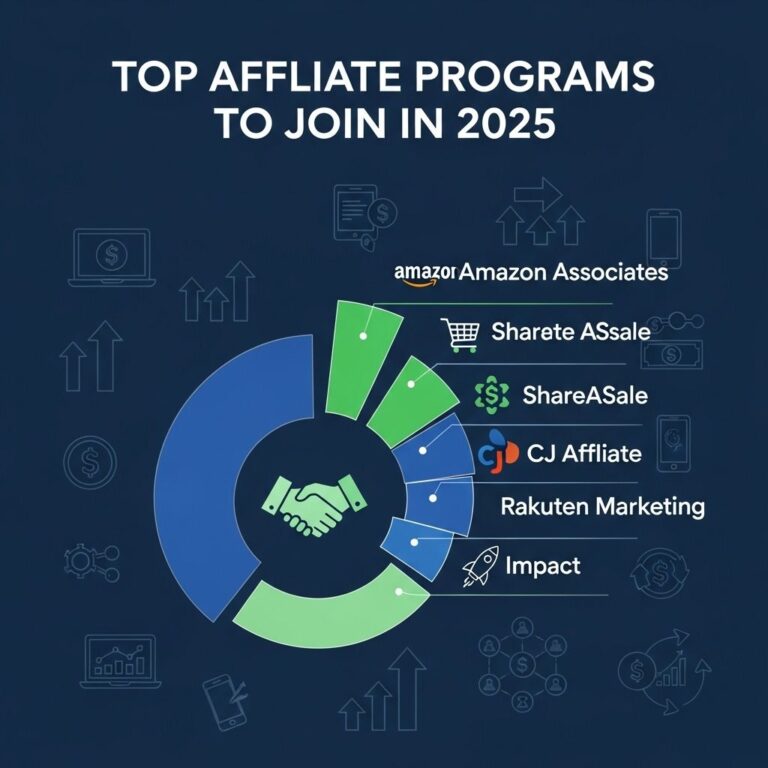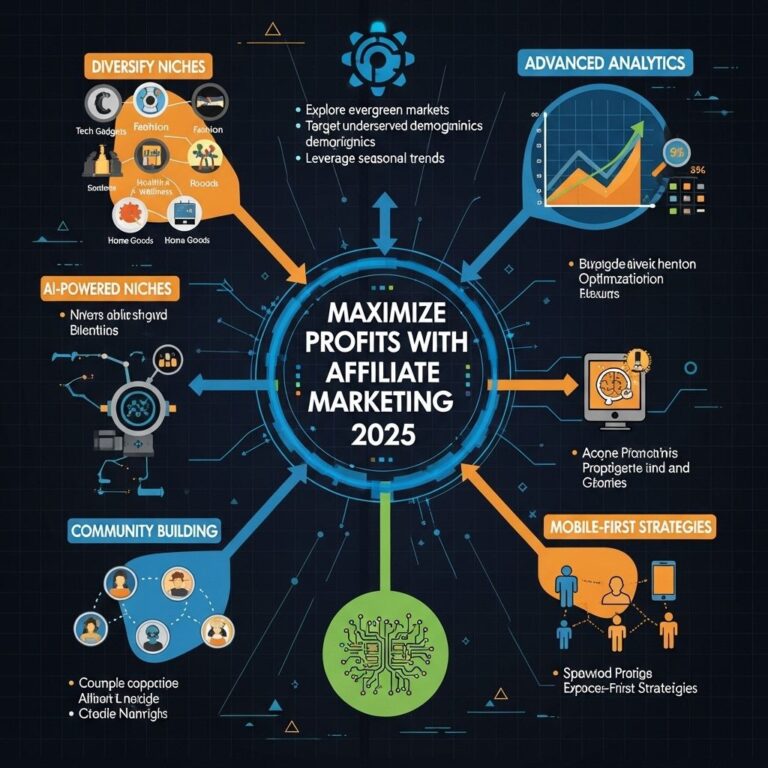In the rapidly evolving landscape of digital marketing, social media has emerged as a formidable platform for generating income, particularly through affiliate marketing. As we approach 2025, the strategies for leveraging social media for affiliate income are becoming more sophisticated, requiring marketers to stay ahead of trends and adapt their approaches. This article delves into the most effective affiliate strategies for social media, focusing on key platforms, innovative techniques, and practical tips for success.
Table of Contents
Understanding Affiliate Marketing in the Social Media Era
Affiliate marketing involves promoting products or services and earning a commission for every sale made through your referral. Social media platforms have become prime avenues for affiliate marketers due to their vast reach and ability to engage audiences directly. Here’s why social media is crucial:
- Massive Audience Base: Platforms like Facebook, Instagram, TikTok, and Twitter boast billions of active users, providing a vast potential customer base.
- Engagement: Social media encourages interaction, allowing affiliates to connect with their audience personally.
- Targeted Advertising: Advanced targeting options enable marketers to reach specific demographics, increasing conversion rates.
Top Social Media Platforms for Affiliate Marketing
Different platforms cater to different audiences and types of content. Here’s a breakdown of the most effective platforms for affiliate marketing:
1. Instagram
Instagram’s visual nature makes it ideal for affiliate marketing, especially for lifestyle, fashion, and beauty products.
- Visual Content: High-quality images and videos are crucial.
- Instagram Stories: Use stories to showcase products with swipe-up links.
- Influencer Collaborations: Partnering with influencers can enhance credibility and reach.
2. TikTok
TikTok is gaining momentum as a platform for affiliate marketing due to its engaging short-form videos. To succeed:
- Create Entertaining Content: Use humor and trends to capture attention.
- Utilize Hashtags: Implement trending hashtags to increase visibility.
- Engage with TikTok Challenges: Participate in or create challenges that promote products.
3. YouTube
YouTube is powerful for in-depth product reviews and tutorials.
- Long-Form Content: Create detailed videos that showcase product benefits.
- Call-to-Action: Always include a call-to-action directing viewers to your affiliate links.
- Video Descriptions: Place affiliate links in video descriptions for easy access.
Effective Affiliate Marketing Strategies for 2025
As we move towards 2025, the following strategies will enhance your affiliate marketing efforts on social media:
1. Embrace Authenticity
Today’s consumers are savvy and can easily detect insincerity. Authenticity fosters trust and encourages purchases. Here’s how to stay genuine:
- Share personal experiences with the products.
- Engage with your audience transparently.
- Promote only products you truly believe in.
2. Leverage User-Generated Content
User-generated content (UGC) is invaluable for building community and credibility. Strategies include:
- Encouraging followers to share their experiences with your affiliate products.
- Reposting UGC on your channels to showcase real-life usage.
- Running contests or challenges to incentivize content creation.
3. Optimize for Mobile
With the majority of social media users accessing platforms via mobile devices, ensure your content is mobile-friendly:
- Utilize responsive designs for your landing pages.
- Create short, visually appealing content for quick consumption.
- Test and optimize links to ensure they work seamlessly on mobile.
Trends to Watch in Social Media Affiliate Marketing
As we look to the future, several trends are expected to shape the affiliate marketing landscape. Staying informed about these trends can provide a competitive advantage.
1. The Rise of Social Commerce
Social media platforms are increasingly integrating shopping features. Be prepared to:
- Utilize platform-specific shopping tools.
- Create shoppable posts that directly link to purchase options.
- Engage customers through live shopping events.
2. Increased Regulation and Transparency
With the rise of influencer marketing, transparency is more crucial than ever. Comply with regulations by:
- Disclosing affiliate relationships clearly in your posts.
- Maintaining ethical marketing practices.
- Being open about sponsored content.
3. Artificial Intelligence (AI) in Targeting
AI is revolutionizing how marketers analyze data and target ads. Consider these approaches:
- Utilize AI tools to gain insights into audience behavior.
- Employ algorithms for personalized content delivery.
- Test AI-driven ad campaigns to enhance performance.
Building a Solid Affiliate Marketing Strategy
Crafting a comprehensive affiliate marketing strategy involves planning and execution. Here’s a structured approach:
1. Define Your Niche
Select a niche that aligns with your interests and expertise to build authority.
2. Research Affiliate Programs
Choose reputable affiliate programs that offer competitive commissions and quality products.
3. Create Quality Content
Content is king in driving engagement and conversions. Strategies include:
- Producing informative blog posts and articles.
- Creating compelling visual content for social media.
- Utilizing data-driven insights to guide content creation.
4. Analyze and Optimize
Regularly analyze performance metrics to optimize your strategy. Consider:
- Tracking conversion rates and click-through rates (CTR).
- Testing different types of content to see what resonates.
- Adjusting strategies based on analytics.
Conclusion
As the digital landscape continues to evolve, so too must the strategies for affiliate marketing on social media. By understanding the platforms, embracing authenticity, leveraging trends, and building a solid strategy, marketers can effectively harness the power of social media to generate substantial income through affiliate marketing. The landscape is ever-changing, and staying informed will be key to thriving in this dynamic environment.
FAQ
What are the best affiliate marketing strategies for social media in 2025?
In 2025, the best affiliate marketing strategies for social media include leveraging influencer partnerships, utilizing video content for product demonstrations, and focusing on niche communities to build trust and engagement.
How can I optimize my social media profiles for affiliate marketing?
To optimize your social media profiles for affiliate marketing, ensure your bio includes relevant keywords, add links to your affiliate products, and regularly post valuable content that resonates with your target audience.
What platforms are most effective for affiliate marketing in 2025?
In 2025, platforms like Instagram, TikTok, and YouTube are highly effective for affiliate marketing due to their visual nature and large user bases that favor engaging content.
How do I track the success of my affiliate marketing campaigns on social media?
You can track the success of your affiliate marketing campaigns on social media by using analytics tools provided by the platforms, monitoring click-through rates, and analyzing conversion rates from your affiliate links.
Are there specific types of content that work best for affiliate marketing on social media?
Yes, content types such as tutorials, reviews, unboxings, and live Q&A sessions tend to work best for affiliate marketing on social media, as they provide value and authenticity to your audience.
What are the common mistakes to avoid in social media affiliate marketing?
Common mistakes to avoid in social media affiliate marketing include not disclosing affiliate relationships, over-promoting products, neglecting audience engagement, and failing to analyze performance data.






